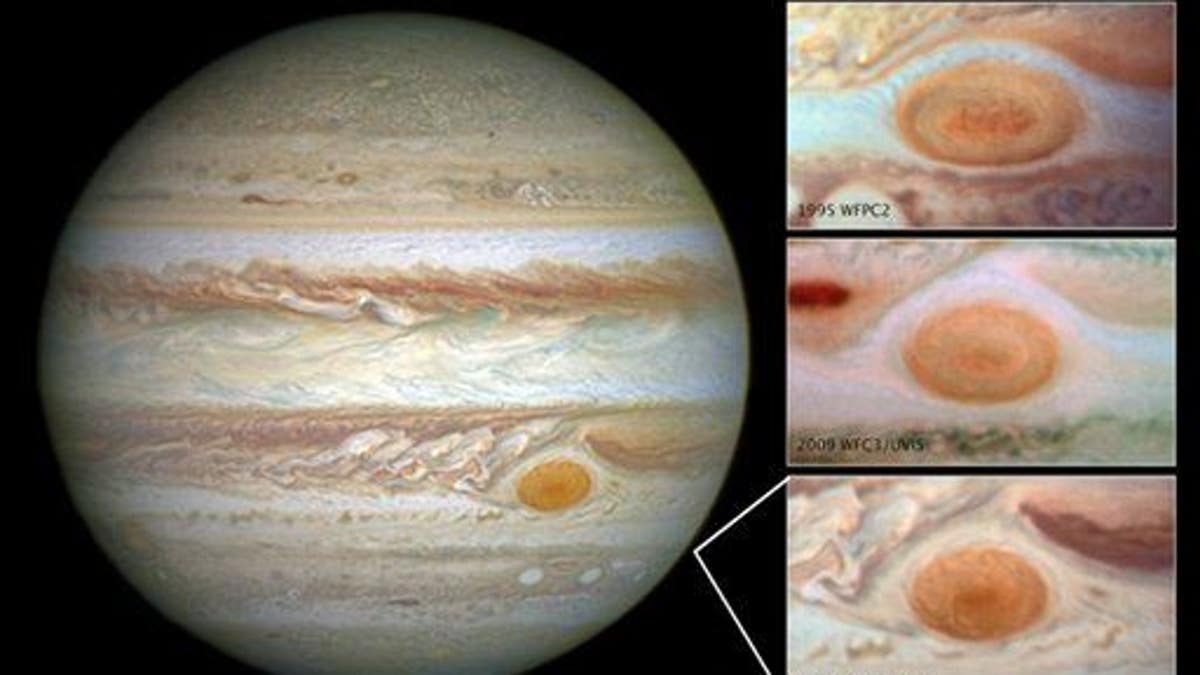
This composite handout image provided by NASA, taken by the Hubble Space Telescope, shows the Great Red Spot in 2014, left; in 1995, top right; 2009, center right; and 2014, bottom right. (AP Photo/NASA)
The signature red spot we see in pictures of Jupiter could fit three Earths next to each other—in the late 1800s. The Great Red Spot is getting smaller, and the reason is a mystery, Reuters reports.
It was some 25,000 miles across in the late 19th century; by 1980, it had shrunk to some 14,500 miles across, not even big enough to fit two Earths.
Now, new Hubble Space Telescope photos released Thursday show it has dwindled to a diameter of about 10,250 miles. It's long been an oval, but as it shrinks it's becoming more and more circular, a Hubble press release notes.
The spot is the solar system's biggest storm, with winds measuring hundreds of miles per hour. Scientists have been aware the spot has been getting smaller since the 1930s, but the release notes that in 2012 amateur observations revealed that shrinkage rate is accelerating, and now stands at about 621 miles per year.
One theory as to why: It seems "very small eddies are feeding into the storm," says a NASA scientist who plans to study their motion. "We hypothesized that these may be responsible for the accelerated change by altering the internal dynamics of the Great Red Spot." HubbleSite offers another theory: "Some unknown activity in the planet's atmosphere may be draining energy and weakening the storm, causing it to shrink." (Another recent NASA find: a square "hole" spotted in the sun.)
More From Newser
